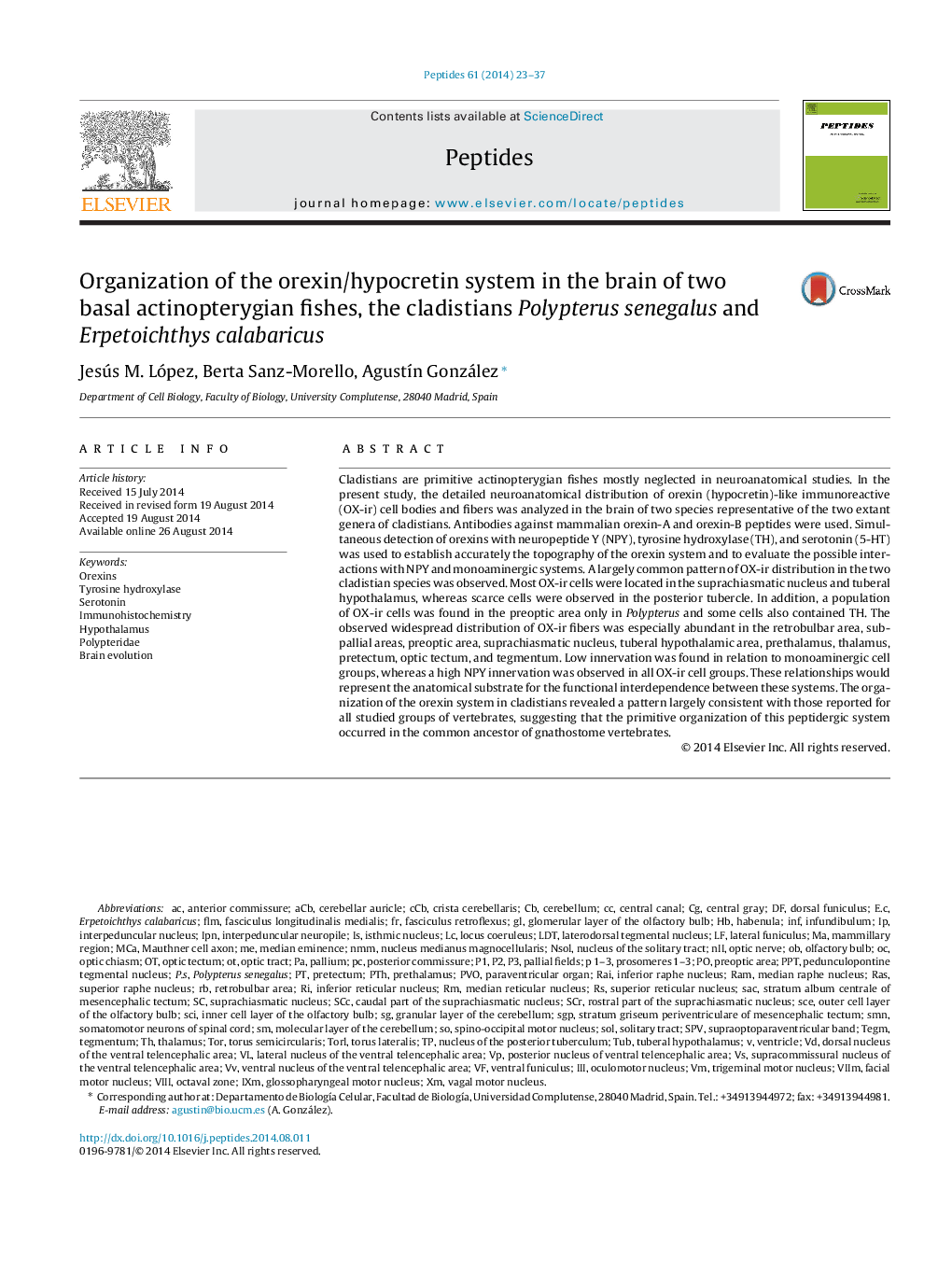| Article ID | Journal | Published Year | Pages | File Type |
|---|---|---|---|---|
| 8348235 | Peptides | 2014 | 15 Pages |
Abstract
Cladistians are primitive actinopterygian fishes mostly neglected in neuroanatomical studies. In the present study, the detailed neuroanatomical distribution of orexin (hypocretin)-like immunoreactive (OX-ir) cell bodies and fibers was analyzed in the brain of two species representative of the two extant genera of cladistians. Antibodies against mammalian orexin-A and orexin-B peptides were used. Simultaneous detection of orexins with neuropeptide Y (NPY), tyrosine hydroxylase (TH), and serotonin (5-HT) was used to establish accurately the topography of the orexin system and to evaluate the possible interactions with NPY and monoaminergic systems. A largely common pattern of OX-ir distribution in the two cladistian species was observed. Most OX-ir cells were located in the suprachiasmatic nucleus and tuberal hypothalamus, whereas scarce cells were observed in the posterior tubercle. In addition, a population of OX-ir cells was found in the preoptic area only in Polypterus and some cells also contained TH. The observed widespread distribution of OX-ir fibers was especially abundant in the retrobulbar area, subpallial areas, preoptic area, suprachiasmatic nucleus, tuberal hypothalamic area, prethalamus, thalamus, pretectum, optic tectum, and tegmentum. Low innervation was found in relation to monoaminergic cell groups, whereas a high NPY innervation was observed in all OX-ir cell groups. These relationships would represent the anatomical substrate for the functional interdependence between these systems. The organization of the orexin system in cladistians revealed a pattern largely consistent with those reported for all studied groups of vertebrates, suggesting that the primitive organization of this peptidergic system occurred in the common ancestor of gnathostome vertebrates.
Keywords
IPNInfundibulumTegmFasciculus retroflexusPVOMammillary regionlateral funiculusTuberal hypothalamuspTHfasciculus longitudinalis medialisPolypterus senegalusIXMNIIinfFLMIIIVIImNsolvagal motor nucleusSPVTORNMMsuperior reticular nucleusCCBSCEPPTLDTRAITorus semicircularisSACRASSCCPretectumMCASGPSMNAcbDorsal funiculusHabenulaparaventricular organOrexinsImmunohistochemistryVentriclePalliumThalamuscrista cerebellarisTorus lateralisBrain evolutiontyrosine hydroxylasecentral graySolitary tractoptic tractRamSerotoninOptic tectumSolOptic nervesciVentral funiculusmolecular layer of the cerebellumgranular layer of the cerebellumglomerular layer of the olfactory bulblocus coeruleusCerebellummedian eminencePreoptic areainterpeduncular nucleusoculomotor nucleuspedunculopontine tegmental nucleusnucleus of the solitary tractmedian raphe nucleusTrigeminal motor nucleusFacial motor nucleuslaterodorsal tegmental nucleusSuprachiasmatic nucleusVIIIHypothalamustubPrethalamusolfactory bulboptic chiasmcentral canalPosterior commissureanterior commissureTegmentumSCR
Related Topics
Life Sciences
Biochemistry, Genetics and Molecular Biology
Biochemistry
Authors
Jesús M. López, Berta Sanz-Morello, AgustÃn González,
